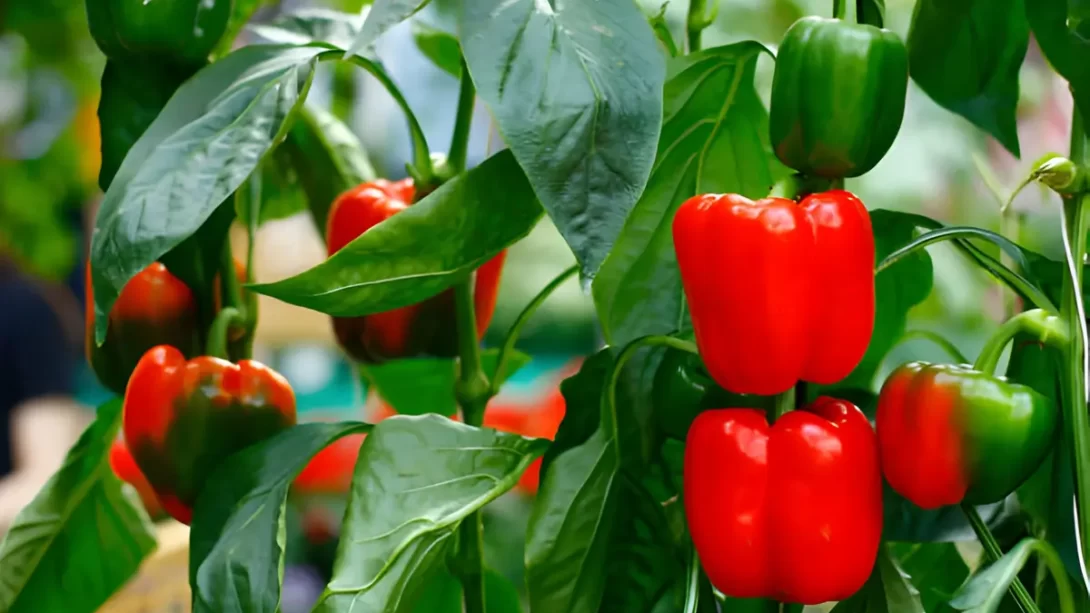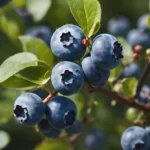Bell peppers, with their vibrant colors and sweet, crisp flavor, are a favorite in gardens and kitchens worldwide. Whether you’re growing bell peppers at home or planning to pick them at a local farm, knowing when and how to harvest them is key to enjoying their best taste and texture. This article provides essential guidance on identifying the perfect time to pick bell peppers, along with effective techniques for harvesting them.
Bell Peppers
Bell peppers, part of the Capsicum annuum species, come in various types and colors, including green, red, yellow, orange, and even purple. They start as green peppers and can change color as they ripen, depending on the variety. Bell peppers are unique in that they can be eaten at different stages of ripeness, each stage offering a different flavor profile. Understanding the growth cycle of bell peppers is crucial for timely and effective harvesting.
Recognizing the Right Time to Harvest
Knowing when to pick bell peppers involves observing several key indicators:
- Color: Depending on the variety, a change in color can be a clear sign of ripeness. For example, green peppers turn red, yellow, or orange as they mature.
- Size: Bell peppers should be full-sized, which varies depending on the variety but is typically around 3-4 inches in diameter.
- Firmness: Ripe bell peppers feel firm to the touch. If they’re too soft, they might be overripe; too hard, and they’re likely underripe.
- Skin Texture: The skin should be glossy and taut, without wrinkles.
It’s important to note that some bell peppers are meant to be harvested when green, while others are best left on the plant to ripen fully. The seed packet or plant tag should indicate the best time for harvesting each specific variety.
Preparing to Harvest
Before you begin harvesting your bell peppers, it’s important to gather the right tools and prepare yourself to ensure a safe and successful harvest. Here’s what you’ll need:
- Sharp Scissors or Pruners: A clean, sharp pair of gardening scissors or pruners will make a clean cut and prevent damage to the plant.
- Gloves: Optional but recommended, especially if you have sensitive skin or if you’re harvesting a lot of peppers.
- Basket or Container: Have a basket or container ready to place your harvested peppers in.
Wear comfortable clothing and, if you’re harvesting in sunny weather, consider a hat and sunscreen to protect yourself from the sun.
Harvesting Techniques
The technique you use to pick bell peppers is crucial in avoiding harm to both the fruit and the plant. Here’s how to do it right:
- Identify the Ready Peppers: Based on the criteria for ripeness, select the peppers that are ready to be harvested.
- Cut, Don’t Pull: Using your scissors or pruners, snip the stem above the pepper, leaving a short piece of stem attached. This method minimizes stress on the plant and prevents damage to the pepper.
- Support the Plant: With your other hand, gently hold the branch that the pepper is attached to. This provides support and prevents accidentally breaking the branch.
- Harvest Regularly: Regularly picking the mature peppers encourages the plant to produce more fruit.
Handle the peppers gently to avoid bruising them, and place them carefully in your basket or container.
Signs of a Perfectly Ripe Bell Pepper
Understanding the signs of a ripe bell pepper will help you pick them at their peak of flavor. A perfectly ripe bell pepper typically has:
- Vibrant Color: Whether it’s green, red, yellow, or another color, the pepper should have a deep, uniform hue.
- Firm Texture: The pepper should feel firm and plump, not soft or wrinkled.
- Crisp Sound: When tapped lightly, a ripe bell pepper will sound hollow and crisp.
- Size: It should have reached its full size, which varies by variety but generally is around 3-4 inches in diameter.
The ripeness of the pepper not only affects its taste but also its nutritional content. For instance, red bell peppers have more beta-carotene and vitamin C than green ones.
Post-Harvest Handling and Storage
Once you’ve picked your bell peppers, proper handling and storage are key to preserving their freshness and flavor. Here’s how to handle them after harvest:
- Gentle Handling: Treat the peppers gently to avoid bruising. Bruised areas can decay quickly.
- Cleaning: Rinse the peppers under cool water to remove any dirt. Pat them dry with a clean towel.
- Storage: Store bell peppers in the vegetable crisper of your refrigerator. They typically last for about one to two weeks. For longer storage, consider freezing them. Slice or chop the peppers, blanch them briefly in boiling water, and then freeze them in airtight containers.
Proper post-harvest handling ensures that your bell peppers retain their quality until you’re ready to use them in your culinary creations.
Common Mistakes to Avoid
When picking bell peppers, there are several common mistakes that can hinder your harvest and the ongoing productivity of your plants. Here are a few to avoid:
- Pulling the Peppers: Avoid pulling the peppers off by hand, as this can damage both the fruit and the plant.
- Overloading the Plant: Don’t leave too many peppers on the plant for too long. This can exhaust the plant and reduce future yields.
- Ignoring Pests and Diseases: Regularly inspect your pepper plants for signs of pests or diseases. Early intervention can save your crop.
By avoiding these common pitfalls, you can ensure a healthy and bountiful harvest.
Conclusion
Picking bell peppers at just the right time and with the proper technique can greatly enhance their quality and flavor. By understanding the signs of ripeness, using the right tools, and handling the peppers carefully after harvest, you can enjoy the best your garden has to offer. Remember, regular harvesting encourages more production, so keep an eye on your plants and enjoy the rewards of your labor. With these tips in hand, you’re well on your way to a successful bell pepper picking experience.



